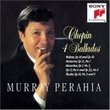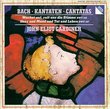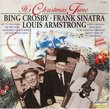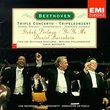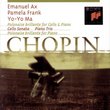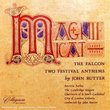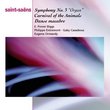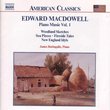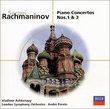| All Artists: Franz Joseph Haydn, Kodaly Quartet Title: Haydn: String Quartets, Op. 33 "Russian", No. 1, No. 2 "The Joke", No. 5 "How do you do?" Members Wishing: 0 Total Copies: 0 Label: Naxos Release Date: 3/21/1995 Genre: Classical Styles: Chamber Music, Historical Periods, Classical (c.1770-1830) Number of Discs: 1 SwapaCD Credits: 1 UPC: 730099578820 |
Search - Franz Joseph Haydn, Kodaly Quartet :: Haydn: String Quartets, Op. 33 "Russian", No. 1, No. 2 "The Joke", No. 5 "How do you do?"
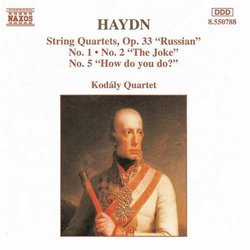 | Franz Joseph Haydn, Kodaly Quartet Haydn: String Quartets, Op. 33 "Russian", No. 1, No. 2 "The Joke", No. 5 "How do you do?" Genre: Classical
Haydn's string quartet Op. 33 No. 2, The Joke, is one of the funniest things he ever wrote, and that's saying a lot because Haydn was the funniest composer in history. In fact, you might say that Haydn really invented the ... more » |
Larger Image |
CD DetailsSynopsis
Amazon.com Haydn's string quartet Op. 33 No. 2, The Joke, is one of the funniest things he ever wrote, and that's saying a lot because Haydn was the funniest composer in history. In fact, you might say that Haydn really invented the language of musical humor as part of his development of what we now call the classical style. These quartets were a crucial milestone, then, in musical history, and it's rare that such important artistic events are such a breezy good time too. In the finale of the The Joke Quartet, Haydn invents a principal theme that breaks up into four equal pieces. By making the pauses between each phrase longer and longer, it becomes impossible to tell when the music actually ends. Check it out for yourself and see if you get it right. --David Hurwitz Similarly Requested CDs
|
CD ReviewsHaydn's String Quartets, Opus 33 Gene R | 02/18/2007 (5 out of 5 stars) "I ordered this CD and its mate with the other three quartets of Opus 33. My interest in these six quartets was originally their importance as models for Mozart's six late quartets dedicated to Joseph Haydn. However, I discovered that these are great works on their own, in the same class as Mozart's. The differences between them show the differences in Mozart and Haydn's temperaments, rather than any difference in genius of the composer or excellence of workmanship. The performances of the Kodaly Quartet are uniformly first-rate, and the quality of the reproduction is excellent. " Warm, good humored and eventful Haydn Gene R | 09/19/1999 (5 out of 5 stars) "The Naxos/Kodaly Quartet series of the complete Haydn string quartets offers a great way to acquire outstanding, historically ground-breaking music in warm, good humored and eventful performances that perfectly capture the spirit of the composer." Warm, funny, charming and eventful Haydn Giordano Bruno | 11/08/1998 (5 out of 5 stars) "These Kodaly Qt. performances of three of the six Haydn op. 33 Quartets, like most of the Kodaly performances of Hadyn in their remarkable bargain series for Naxos, are warm, funny, charming and eventful performances. I've collected nine discs in this series and plan to collect more."
|

 Track Listings (12) - Disc #1
Track Listings (12) - Disc #1